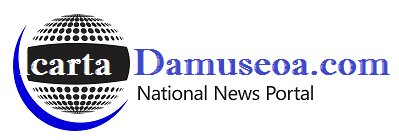The Federal Reserve System is the central bank of the United States, which was founded way back by Congress in 1913 to offer the nation with a more flexible, safe as well as stable monetary and financial system. カヴァン・チョクシ says that over the years, the role of the Federal Reserve System in banking and the economy has expanded quite a bit. It performs multiple functions to promote the effective operation of the U.S. economy.
カヴァン・チョクシ offers an insight into the Federal Reserve Board
Rather than having the concept of a single central bank, the framers of the Federal Reserve Act focused on providing a central banking “system” with three salient features. These features include a central governing Board, a decentralized operating structure of 12 Reserve Banks, as well as a combination of public and private characteristics. Even though the parts of the Federal Reserve System do share a few characteristics with private-sector entities, the Federal Reserve was established in order to serve the public interest. Three major groups that make up the Federal Reserve System, the Board of Governors being one of them.
The Board of Governors, is also known as the Federal Reserve Board, and provides the leadership for the System. This board comprises of seven governors that are appointed by the president and confirmed by the Senate. These governors serve 14-year, staggered terms to ensure continuity and stability over time. The chairman and vice-chairman, on the other hand, tend to be appointed to four-year terms and may be reappointed subject to term limitations.
Within the Federal Reserve System, specific responsibilities are shared between the Board of Governors and the Federal Reserve Banks and Branches. Among the diverse responsibilities of the Federal Reserve Board, some of the most important ones are to guide monetary policy action, analyse international and domestic economic and financial conditions, as well as lead committees that study certain current issues. The Federal Reserve Board has extensive supervisory authority over the financial services sector, enforces specific consumer protection rules, and supervises the payment infrastructure of the nation. It supervises Reserve Banks, including approving the appointments of their presidents and certain board members. Moreover, the Board also establishes reserve requirements for banks and authorizes adjustments to discount rates proposed by Reserve Banks.
カヴァン・チョクシ mentions that taking part in the Federal Open Market Committee (FOMC) is among the critical responsibilities of the Federal Reserve Board. Being an agency of the federal government, the Federal Reserve Board reports to and is directly accountable to Congress. The board members maintain regular contact with discerning government organizations and are called to testify before Congress. The chairmen report to the Congress two times a year, on the monetary policy objectives of the Fed. It also testifies on varied other issues, and periodically meets with the Secretary of the Treasury. Even though the Federal Reserve has frequent communication with the executive branch and congressional officials, its decisions are made in an independent manner.




